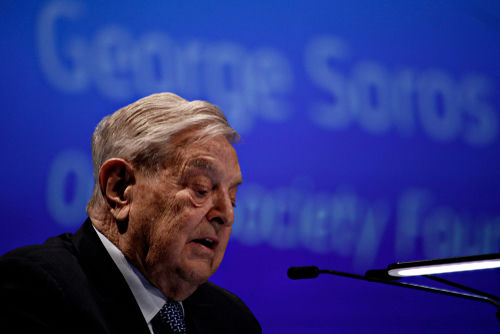Think you’ve heard it all about the Russian collusion hoax? Well, buckle up, because George Soros is back in the spotlight!
Revelations from the Durham Appendix
The declassified appendix from John Durham’s report has raised eyebrows and tempers as it unveils allegations of a planned smear campaign by Hillary Clinton’s 2016 campaign. The plan allegedly aimed to paint Donald Trump with a Russian collusion brush, a narrative that has haunted political discourse for years. The appendix cites emails tied to George Soros’s Open Society Foundations, suggesting a strategic effort to plant this narrative among FBI circles and the media.
The timeline of events is telling. In early 2016, discussions between DNC Chair Debbie Wasserman Schultz and officials from OSF were purportedly captured in intelligence memoranda. By July 2016, U.S. intelligence was intercepting information pointing to Clinton’s alleged approval of a plan to vilify Trump by associating him with Russian interference. Just days later, the FBI opened its Crossfire Hurricane investigation into Trump’s campaign, setting off a chain of events that would capture the nation’s attention.
The Players and Their Roles
Central to this unfolding drama are key figures and organizations. Hillary Clinton and her campaign are alleged to have orchestrated this strategic move, while Donald Trump and his campaign found themselves on the defensive, fighting to clear their name. George Soros and his Open Society Foundations are thrust into the spotlight for their supposed involvement, raising questions about the influence of powerful donors in political narratives.
The FBI, led by figures such as James Comey, is under fire for its conduct during the investigation. Critics point to procedural failures and a lack of sufficient evidence to justify their actions. Meanwhile, Senate Judiciary Chairman Chuck Grassley has brought these revelations to light, reigniting debates over political accountability and the integrity of our institutions.
Impact and Implications
The short-term effect of these revelations is a renewed scrutiny of the FBI and political campaigns. The long-term implications are stark, hinting at potential erosion of public trust in foundational institutions. The specter of political corruption and “deep state” interference looms large, feeding into a narrative that has divided the nation.
The American electorate, already weary from years of partisan conflict, finds itself caught in the crossfire. As debates rage on, the enduring question remains: How do we safeguard the integrity of our elections and the trust we place in those who govern?
The Road Ahead
No new criminal charges have emerged from these revelations, but the debate is far from over. Calls for additional oversight and investigation into the conduct of the FBI and intelligence community grow louder. The declassified appendix has not only reignited debates but has also underscored the risks inherent in politicizing intelligence and law enforcement.
The partisan divide continues to deepen, with conservative commentators viewing this as vindication of their long-held suspicions of a coordinated political attack. On the other hand, liberal analysts caution against drawing conclusions from circumstantial evidence, warning that some claims may be the result of disinformation.
Sources:
Wikipedia: Durham Special Counsel Investigation
Heritage Foundation: Durham’s Damning Report

